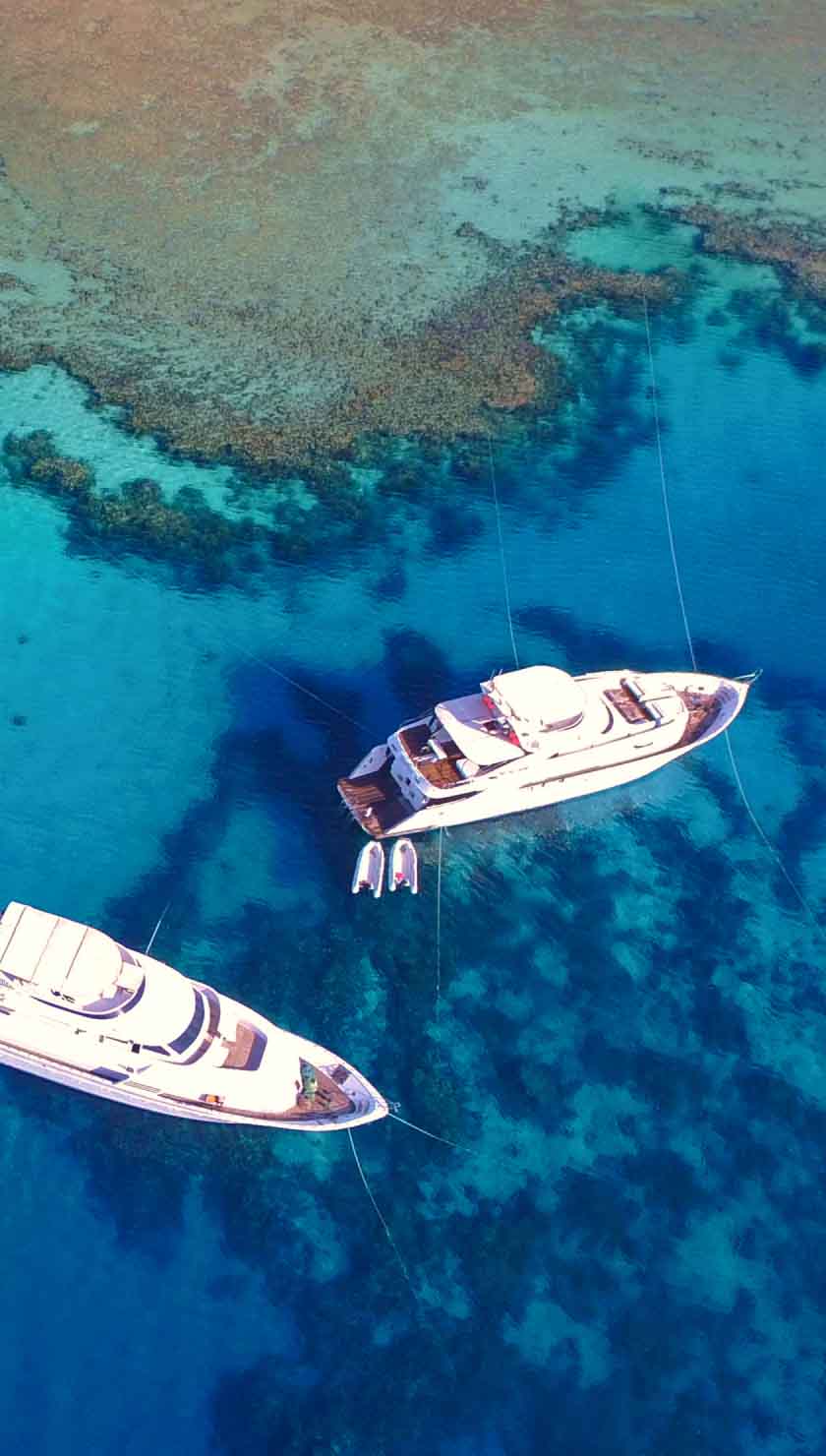Where to Dive with Octopuses
They ripple like living shadows over sand flats and coral heads, changing color and texture as if the reef itself were breathing. Octopuses are the ocean’s great shape-shifters—hyper-intelligent, short-lived, and endlessly curious. For recreational divers and underwater photographers, finding one on a dive can turn an ordinary drift into a page from a naturalist’s field journal. This guide highlights eight destinations where sightings are common on liveaboards and resort boats, explains what makes each species unique, and shares respectful techniques for getting close without stress—while bringing home images that matter.
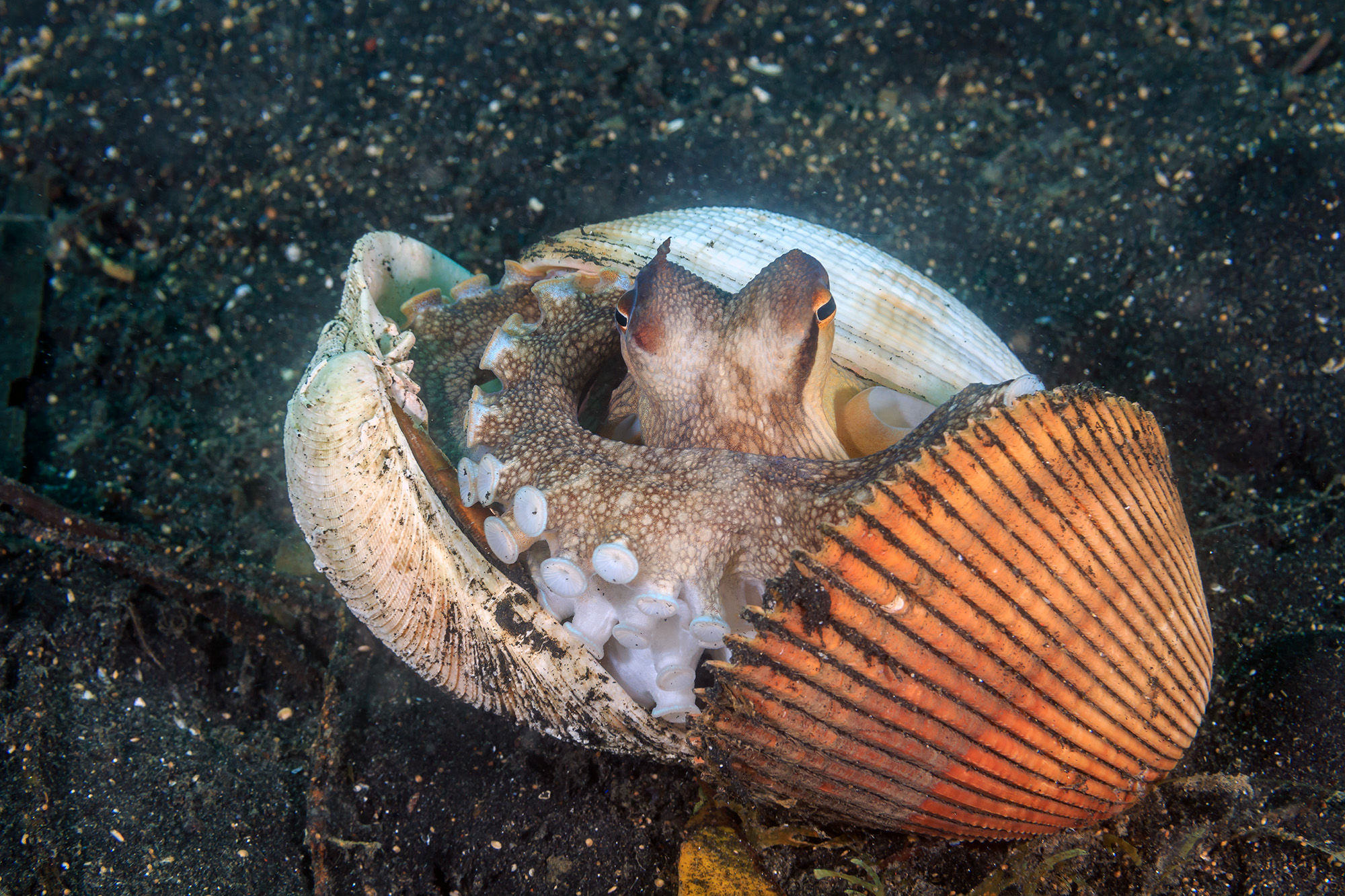
Biology in Brief: Diet, Life Cycle, and Defensive Magic
Most reef-dwelling octopuses are ambush predators. They hunt crabs, shrimp, mollusks, and small fish, using keen eyesight, dexterous arms, and a paralyzing bite to subdue prey. Many forage at dusk or at night, though some, like the day octopus, patrol in daylight when currents bring scent cues.
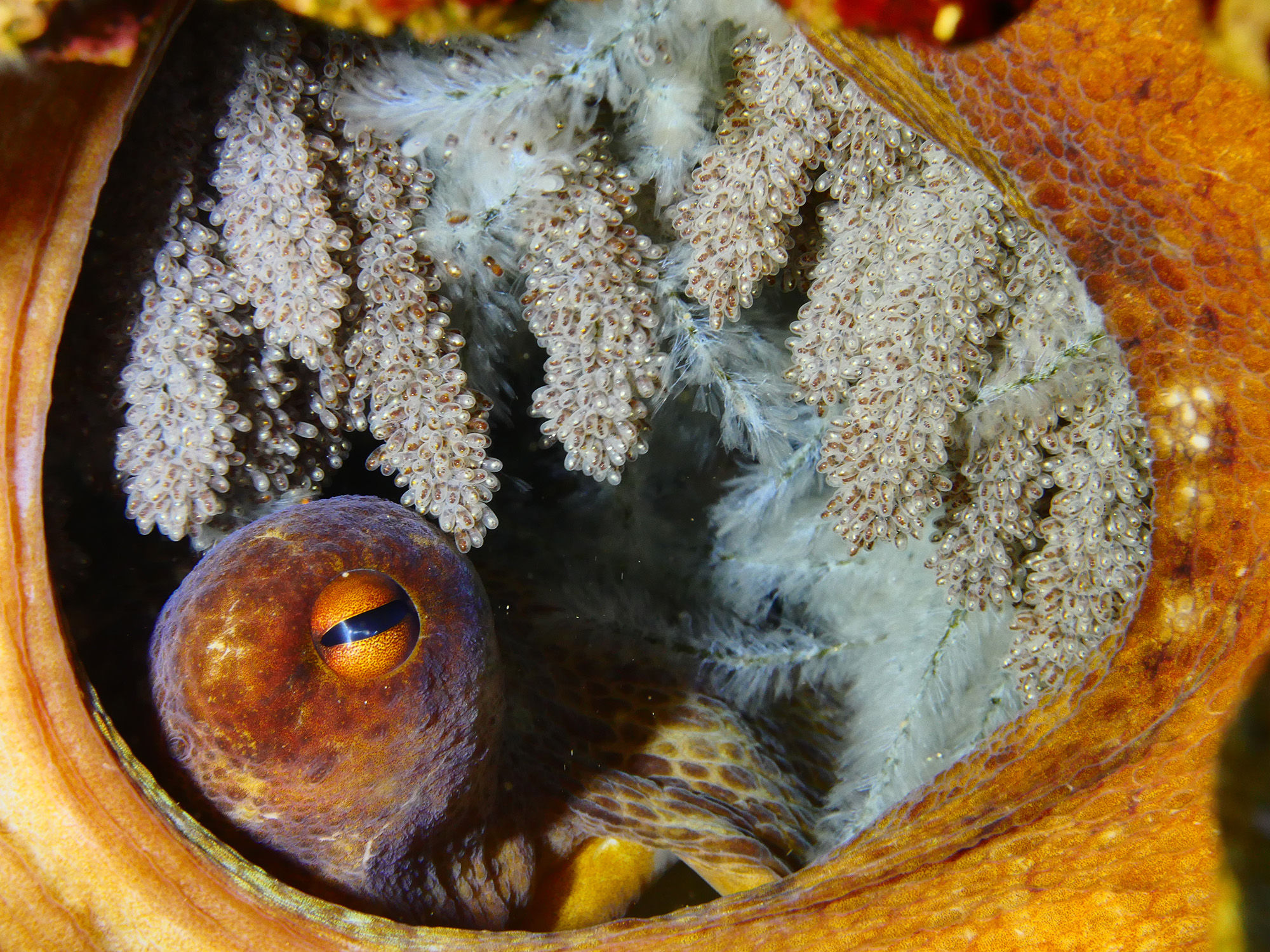
Their lives are fast and intense: juveniles grow rapidly, mature within a year or two, mate once, and die soon after—males shortly after mating, females after guarding eggs until hatching. To evade predators, octopuses deploy an arsenal: chromatophores and iridophores to rewrite their colors, papillae to raise skin into pebbles or spikes, ink as a last-ditch smokescreen, and an uncanny knack for vanishing into dens beneath coral blocks or rubble.
Approach and Photograph Octopuses Without Spooking Them
Everything about octopus etiquette starts with patience. Slow your finning well before you enter the animal’s comfort zone, maintain neutral buoyancy to avoid a silt storm, and keep your profile narrow as you angle in. If you need light, sweep your beam past the den rather than straight into it and let the octopus acclimate before you edge closer. In a group, agree on a simple protocol: the first photographer sets up at a respectful distance, takes a handful of frames, and then steps back so the next diver can approach. This rotation prevents crowding and preserves natural behavior.
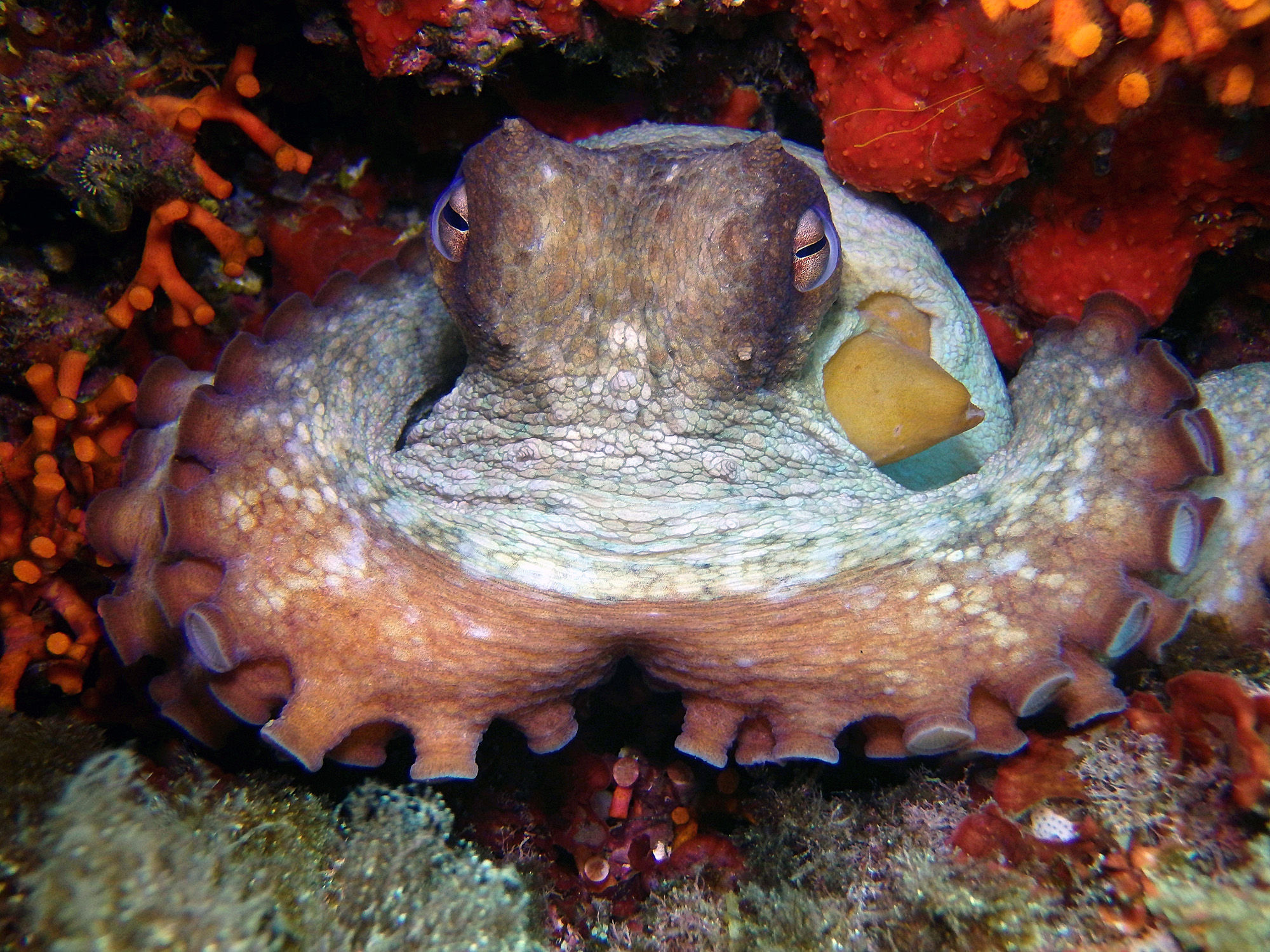
For stills, a macro lens is a reliable choice for small species hiding in rubble, while a compact with a wet wide-angle lens excels when a larger individual emerges. Diffused strobes produce subtle texture without harsh hotspots; place them wider than usual to sculpt shape rather than blast color. If the animal shows stress—rapid paling, ringed or high-contrast flashing, or retreats deep into a den—back off and reduce the light. Video shooters should prioritize continuous lights on low power, stabilize with gentle breathing rather than bracing on the bottom, and record a minute of behavior so editors have room to craft a story.
8 Octopus Hotspots
Lembeh Strait, Indonesia — Mimic, Wunderpus & Coconut Octopuses
In North Sulawesi, Indonesia, the volcanic sand slopes of Lembeh Strait have become legendary for muck diving and macro marine life. Divers commonly encounter Thaumoctopus mimicus (mimic octopus), Wunderpus photogenicus, and the clever coconut octopus Amphioctopus marginatus. Many sightings happen between five and twenty meters at dive sites like Hairball and Jahir, making them easily accessible for recreational divers using compact or macro setups.
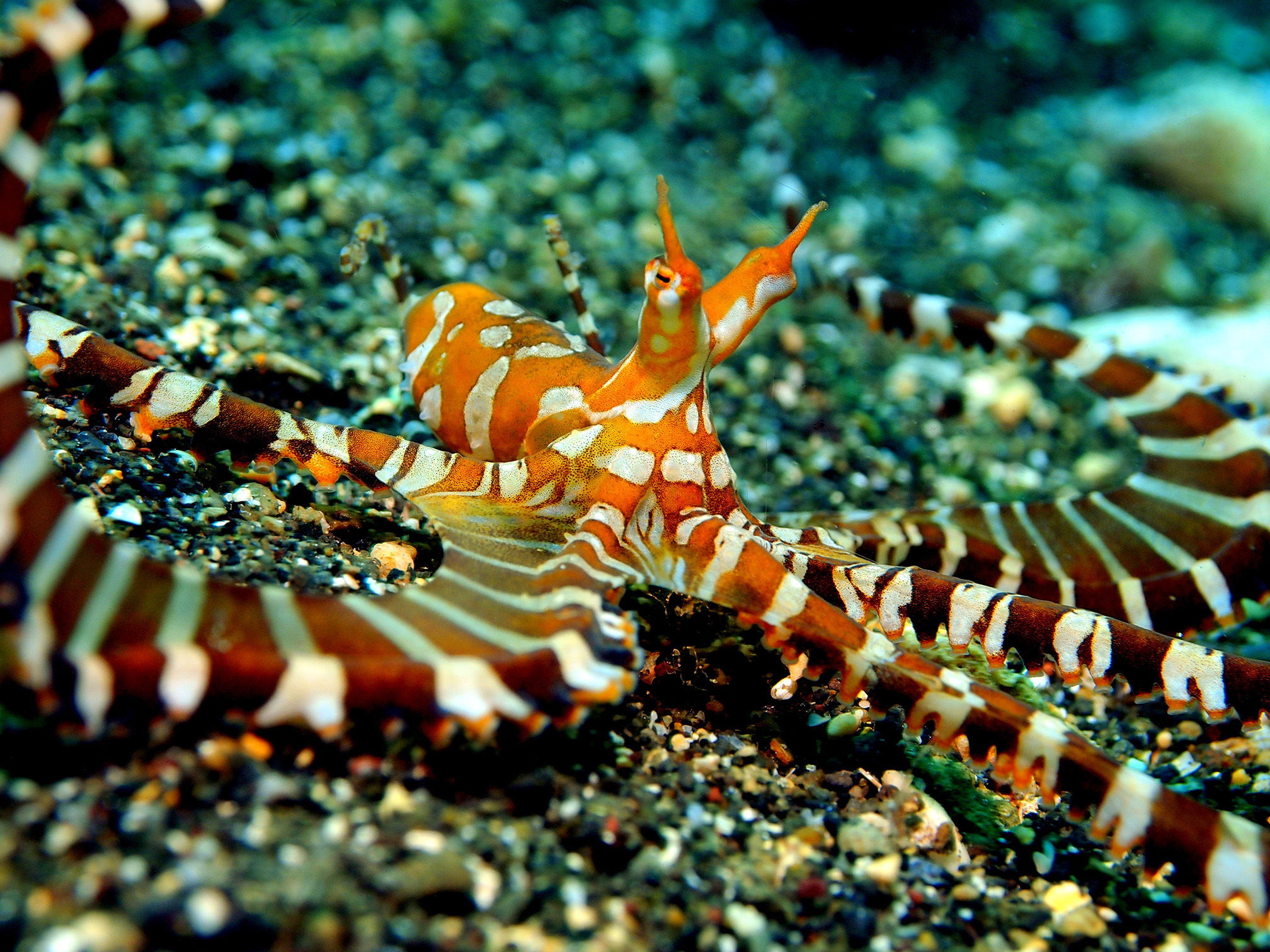
Anilao, Philippines — Wunderpus, Mimic & Blue-ringed Octopuses
Just a few hours south of Manila, the protected bays of Anilao in the Philippines are a haven for macro enthusiasts. Silty bottoms and coral rubble are home to the Wunderpus, mimic octopus, and several species of blue-ringed octopus (Hapalochlaena). Local guides are trained to spot these elusive critters around Secret Bay and Mainit Muck, and night dives in 10–20 meters of water often produce spectacular encounters.
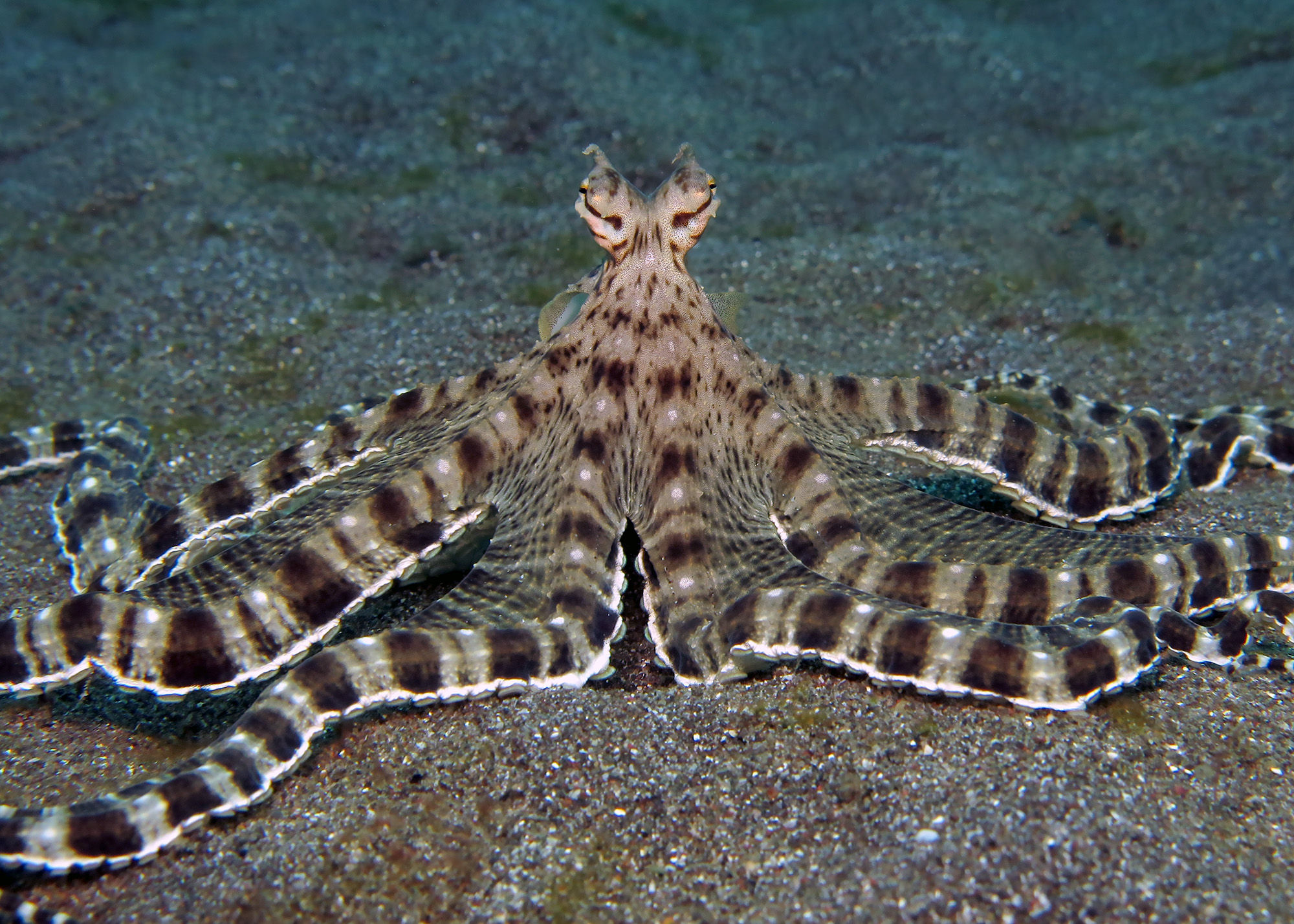
Tulamben & Amed, Bali — Coconut & Algae Octopuses
On the northeastern coast of Bali, Indonesia, the dive sites of Tulamben and Amed offer black sand slopes perfect for spotting cryptic species. The coconut octopus often uses shells and bottle caps for shelter, while the algae octopus Abdopus aculeatus mimics seaweed as it "walks" across the bottom. Shallow reefs and sandy patches around Seraya Secrets and Melasti make these encounters ideal for relaxed shore diving.
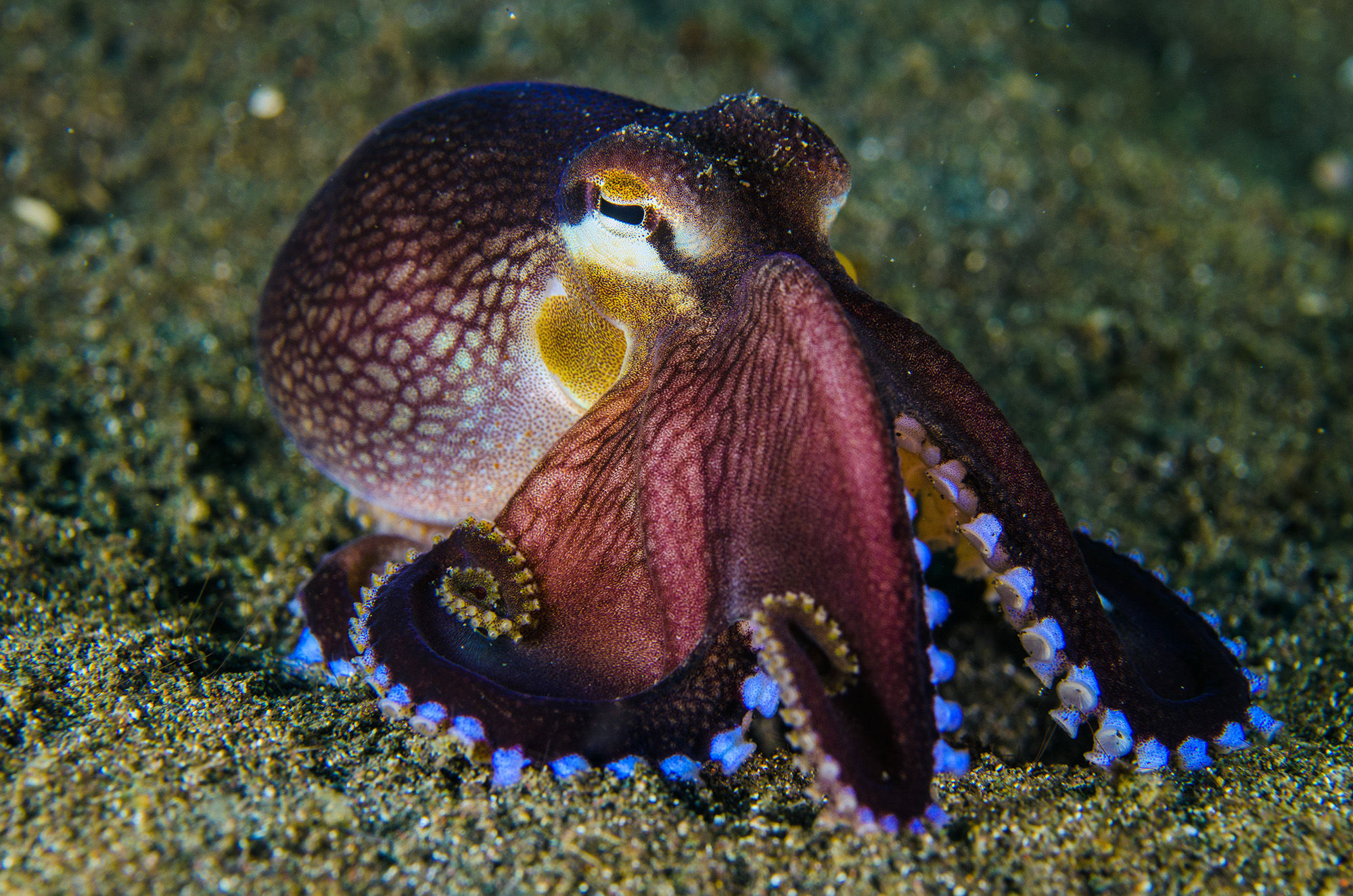
Mabul & Kapalai, Malaysian Borneo — Blue-ringed & Coconut Octopuses
Near Sipadan Island in Sabah, Malaysia, the house reefs around Mabul and Kapalai islands are teeming with small cephalopods. Divers regularly find blue-ringed octopuses and coconut octopuses along the sandy slopes and artificial reef structures of Eel Garden and Paradise 1. These sites typically stay within 10–25 meters, making them excellent options for night dives or extended macro sessions.
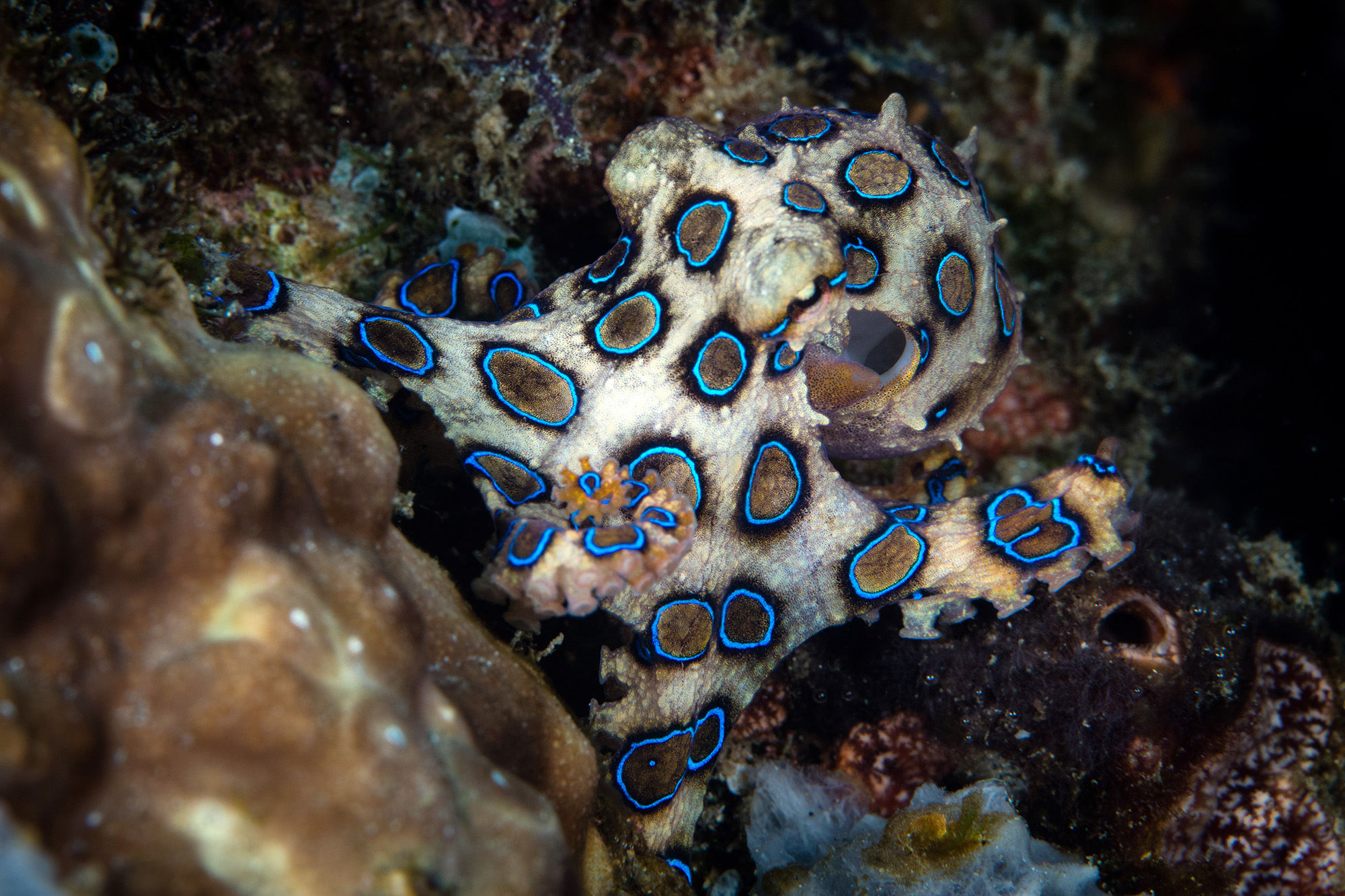
Andaman Sea, Thailand — Day Octopus on Granite Pinnacles
In Thailand’s Andaman Sea, diving around the Similan Islands and Richelieu Rock offers a different octopus experience. The day octopus (Octopus cyanea) thrives among granite boulders and coral heads, especially on sites like Elephant Head Rock and Koh Bon. Divers exploring depths between 10 and 25 meters often catch them foraging in daylight hours, especially on incoming tides.
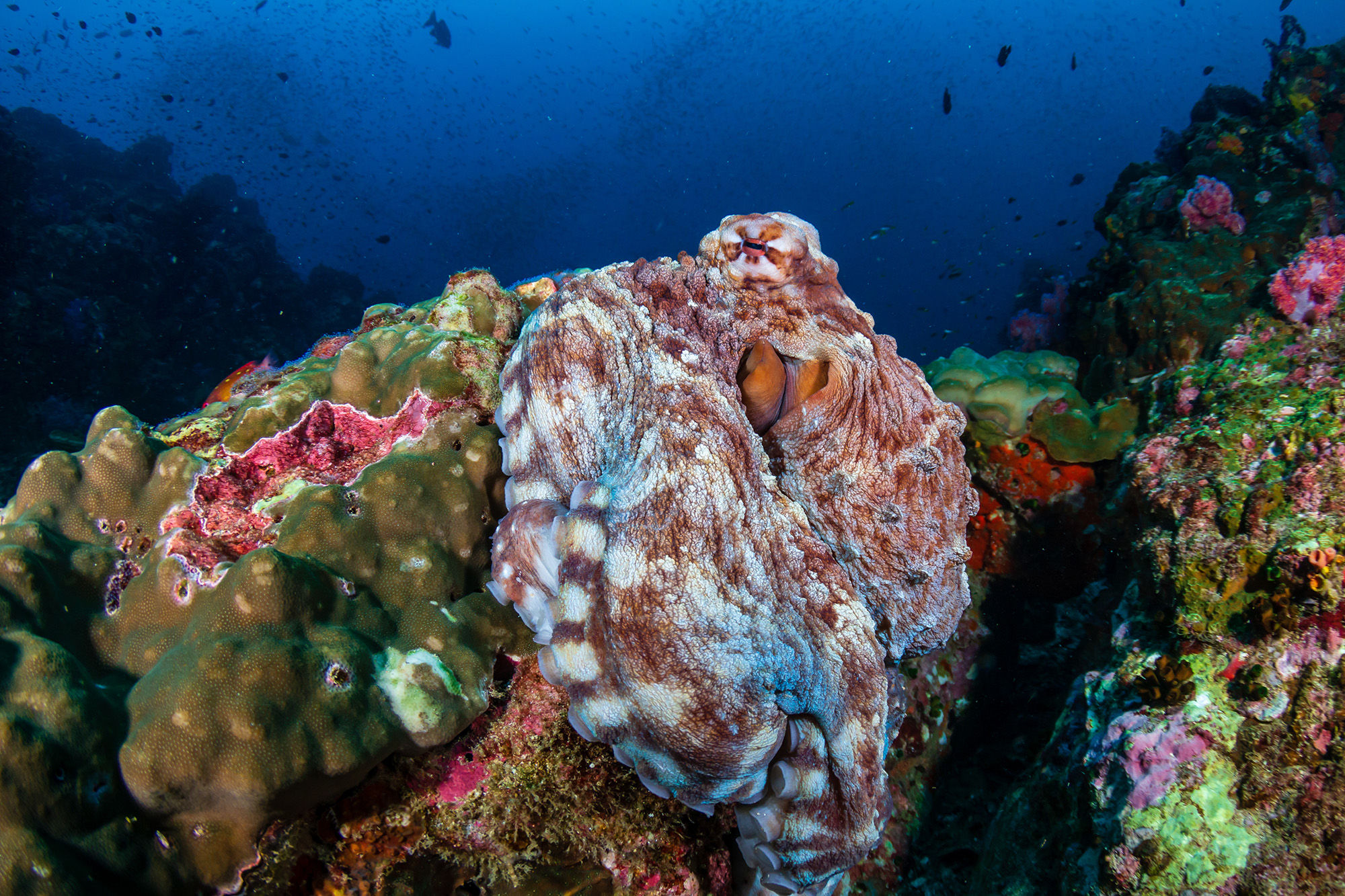
Turneffe & Lighthouse Atolls, Belize — Caribbean Reef Octopus
In the Caribbean waters off Belize, the remote reefs of Turneffe and Lighthouse Atolls are prime habitats for Octopus briareus, the Caribbean reef octopus. Night dives along coral ridges and sandy channels, such as Half Moon Caye and Black Beauty, offer opportunities to observe these animals as they hunt shrimp and crabs. With calm seas and average depths of 15–20 meters, these dives are accessible and rewarding.
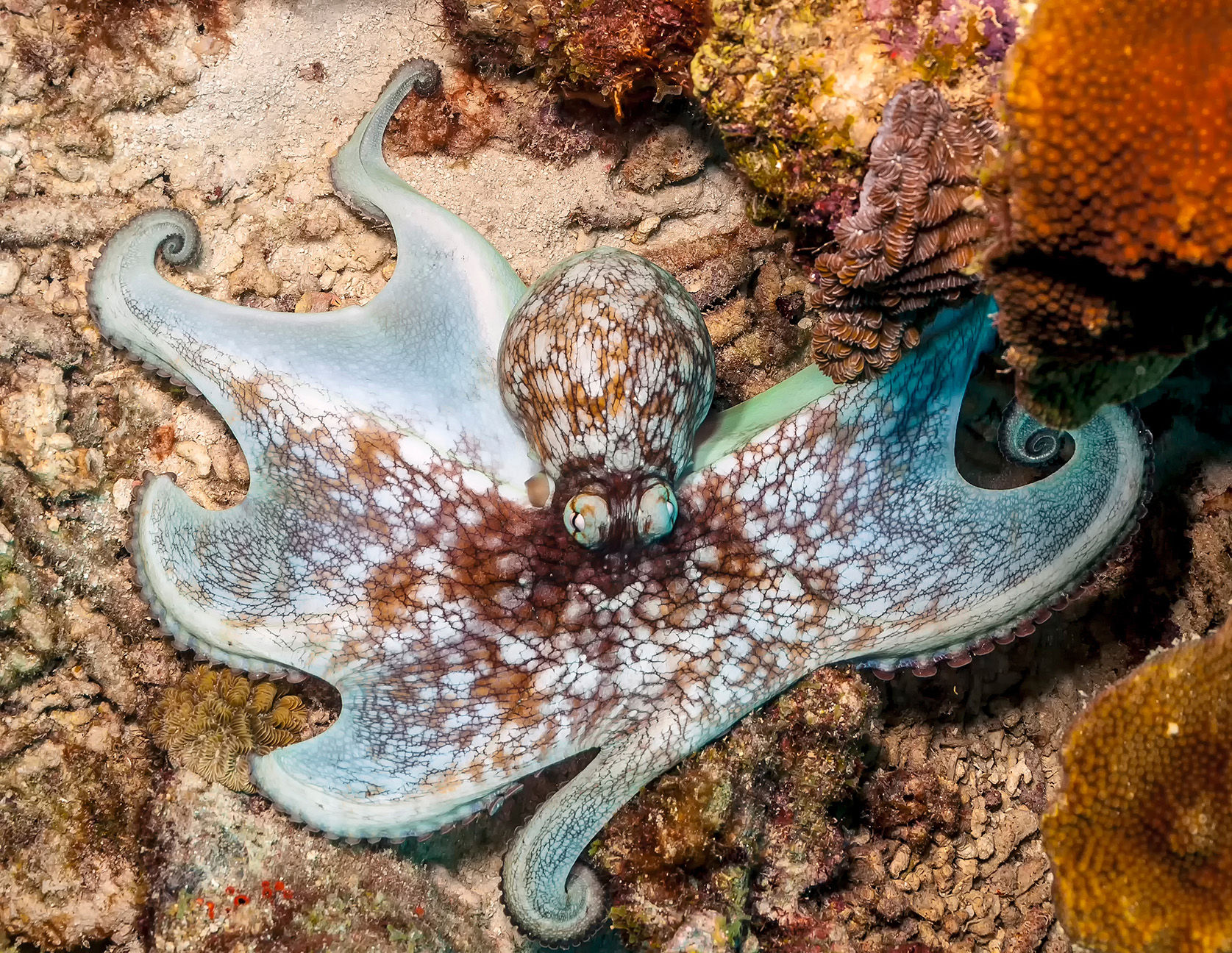
Tenerife & La Palma, Canary Islands — Common Octopus on Lava Reefs
Spain’s Canary Islands, especially Tenerife and La Palma, offer excellent temperate diving with lava-formed ledges and overhangs. Octopus vulgaris, the common octopus, is frequently spotted on sites like Tabaiba Wreck and Los Chuchos, often outside dens marked by piles of crab shells. Shallow dives of 12 to 20 meters make it easy to observe without needing advanced certifications.
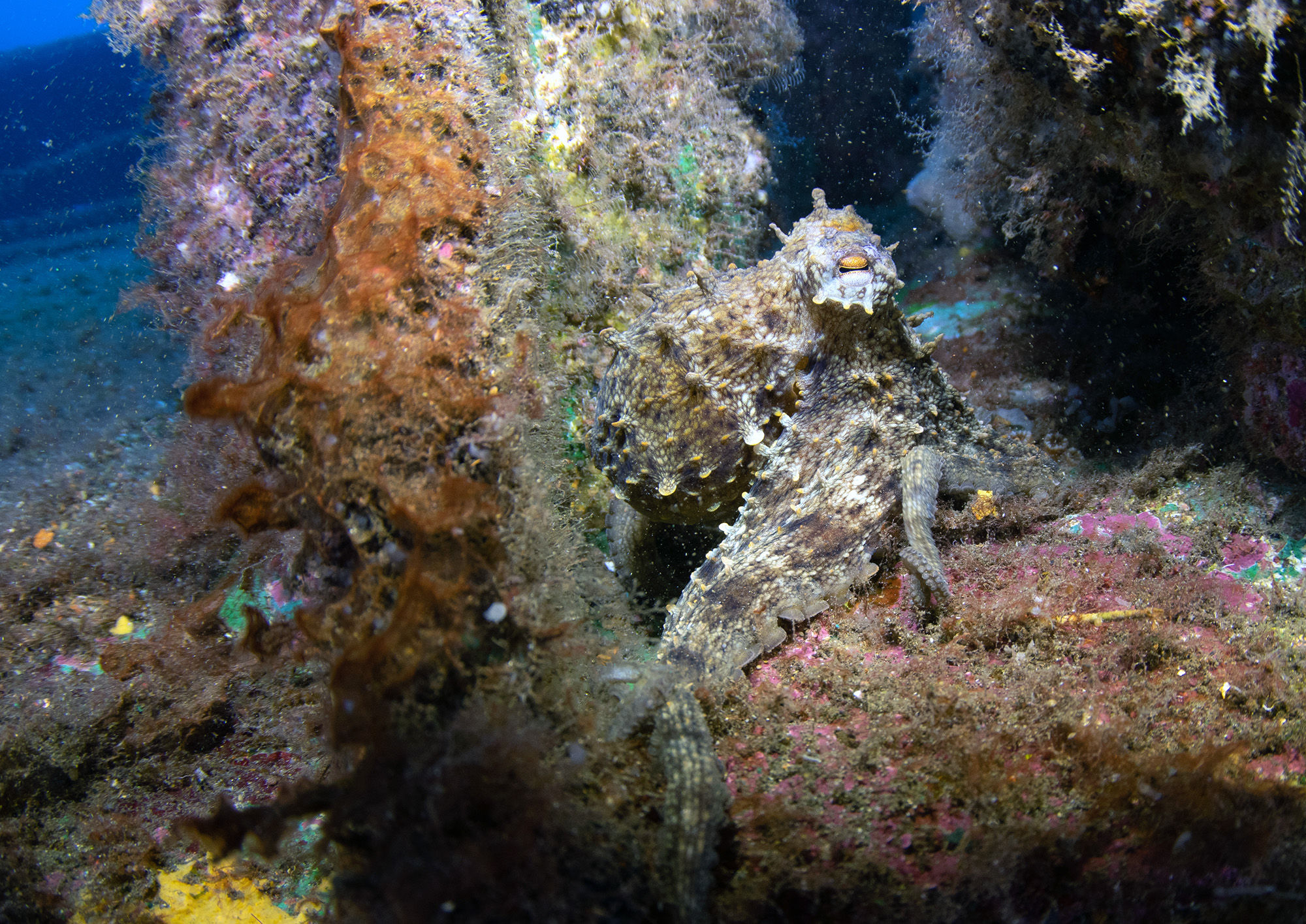
Kona, Hawaii — He‘e Maoli (Day Octopus) on Coral & Basalt
On the Big Island of Hawaii, the coastline around Kona is a hotspot for Octopus cyanea, locally known as he‘e maoli. These octopuses are found between 10 and 18 meters at dive sites like Two Step and Eel Cove, where they blend perfectly with the basalt lava and coral terrain. Their active foraging behavior during the day makes them easier to spot than many of their nocturnal cousins.
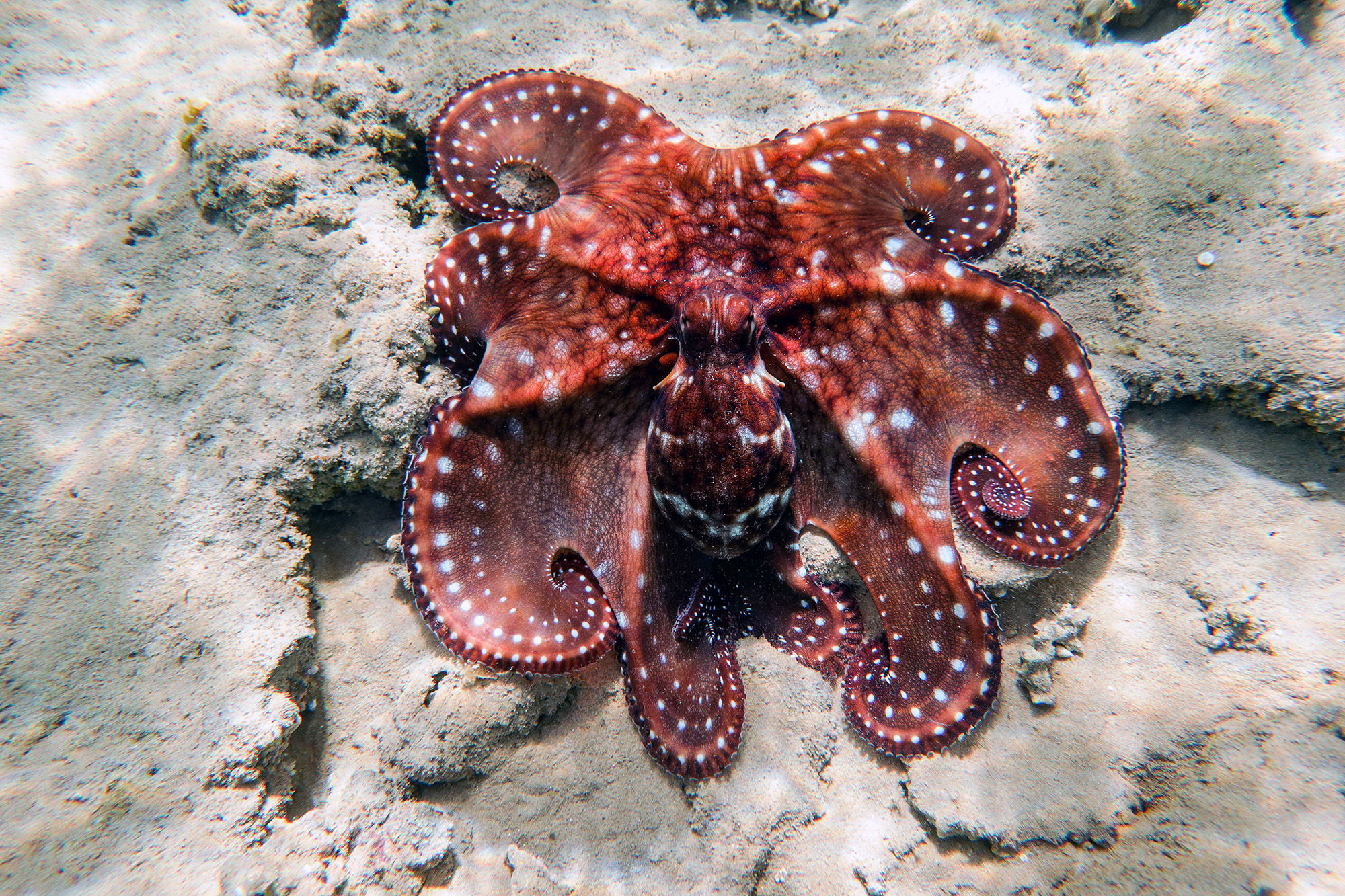
Conservation Status, Pressures, and the Diver’s Role
Many shallow-water octopuses are currently listed as Least Concern or remain unevaluated, but that label can be deceptive. Their fates are tied to nearshore habitats—reefs, seagrass, mangroves, and soft-sediment bays—that face rising temperature stress, acidification, pollution, and mechanical damage. Coastal fishing pressure can be intense, with targeted harvests in some regions and bycatch in others. Because octopuses grow rapidly and reproduce only once, populations may rebound quickly after good recruitment years; however, they can also decline abruptly when habitats degrade or harvests peak.
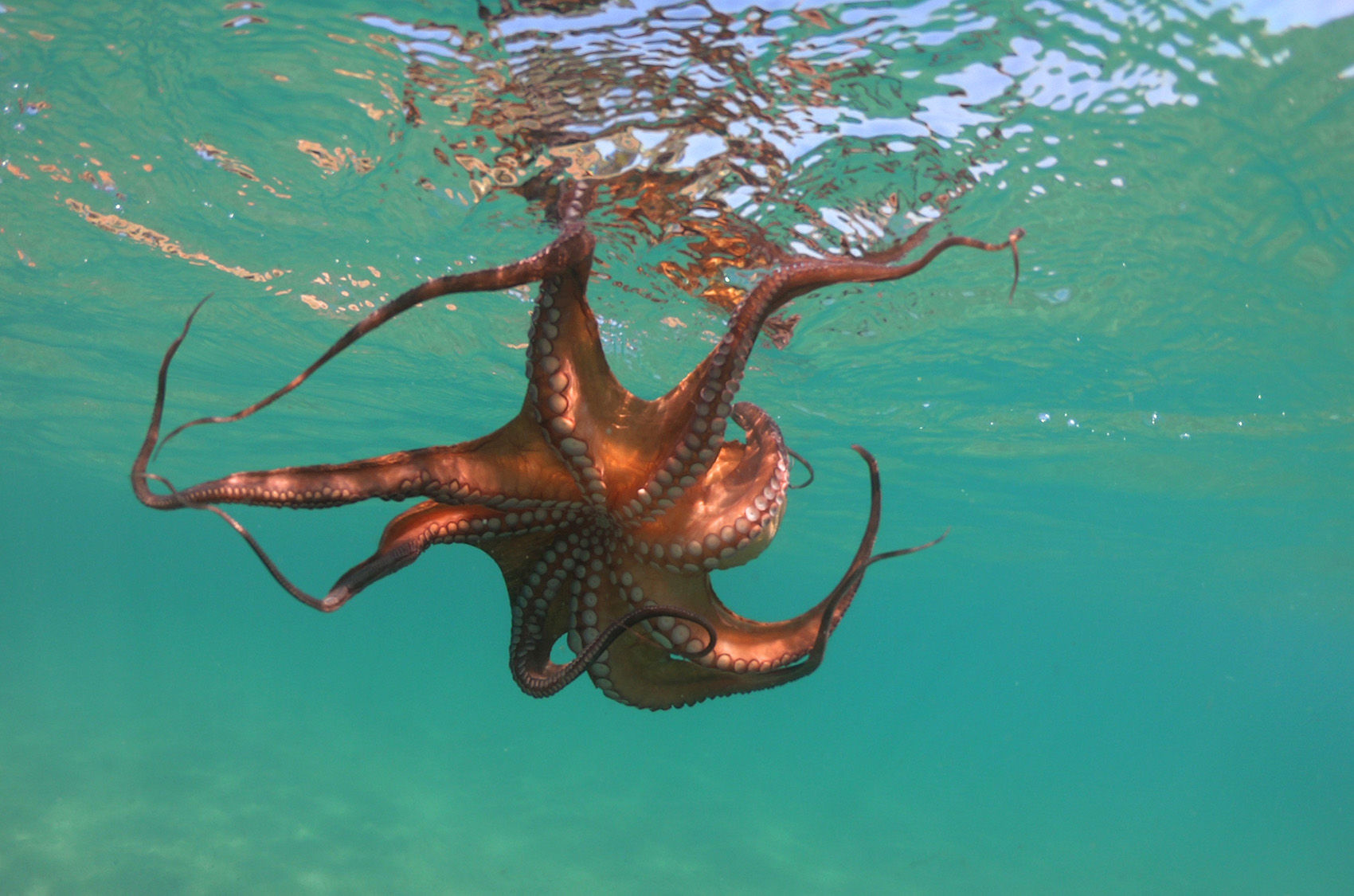
Divers are uniquely positioned to help. The simplest step is skill: refine buoyancy, avoid physical contact with the bottom, and never manipulate rocks or shells to flush an animal. Choose reef-safe sunscreen topside, reduce single-use plastics that become marine debris, and support operators who anchor responsibly or use moorings. Consider contributing images and notes—such as species, depth, behavior, and site names—to community science platforms or local marine labs; these records help fill gaps in distribution and seasonality data. When purchasing seafood at home, opt for verified sustainable sources and avoid products associated with destructive practices in octopus fisheries.
Turning Encounters into Stories that Protect
Every octopus sighting can be more than a trophy shot. Frame your images to reveal behavior—such as egg-tending, hunting, or den building—so your audience learns something genuine about the animal. Pair photographs with site details and share them with guides, researchers, and other divers. When your group adopts gentle, camera-savvy protocols, you’ll find that octopuses linger longer, colors stay richer, and the footage feels alive rather than startled. That patience translates directly into conservation: the more divers see these animals acting naturally, the more compelling the case to safeguard their fragile neighborhoods of sand, seagrass, and coral.
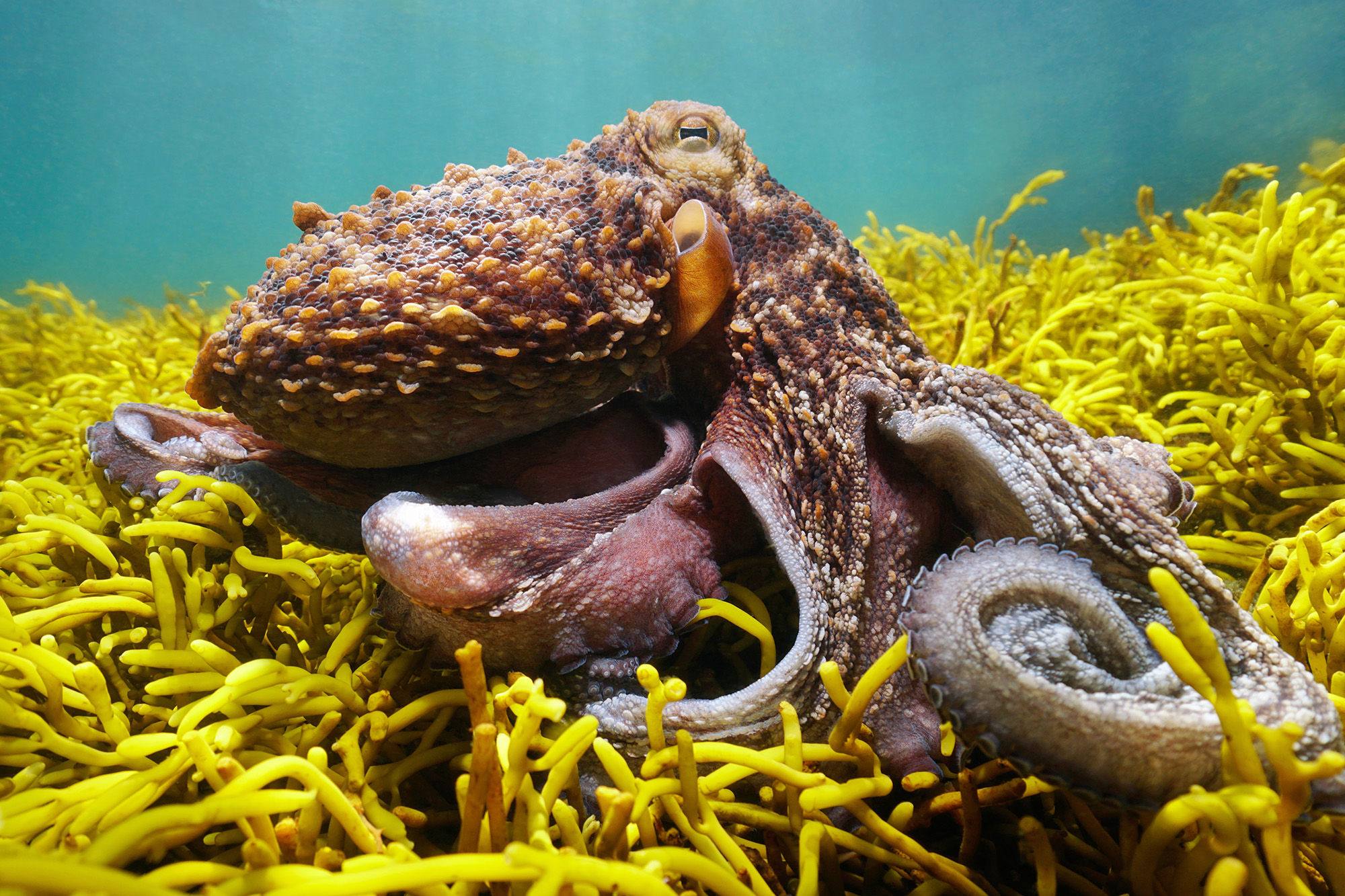
Plan, Pause, and Let the Reef Introduce You
The best octopus dives are quiet and unhurried. Choose itineraries that include muck slopes, rubble flats, and reefs. Schedule dusk and night dives when species emerge, and dive with guides who understand the behavior of the species, setting turn-taking protocols for photographers. If you move slowly enough, the reef begins to narrate itself—middens of crab shells mark a doorway, a shifting patch of “rock” resolves into an eye, and eight arms write a living story across the seafloor. Meet them on their terms, and these masters of disguise will reward you with encounters you’ll never forget.











